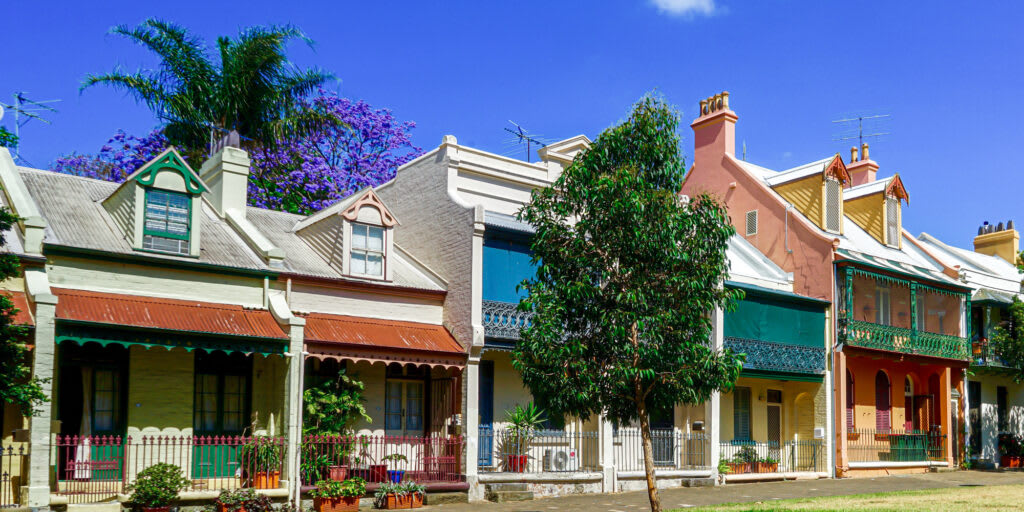Claiming depreciation on your property is one of the most critical steps in an investor’s journey. And it’s the only deduction that can be subjective.
All other expenses – such as interest, strata fees etc. must equal the amount you have precisely paid out.
But, having an expert prepare, your tax depreciation report can enhance your claim. So, here are my Top 7 Tax Depreciation tips to take full advantage of the return on your investment property.
Number 1: Maximise the Cost of Construction
Property investors must use the original construction cost when depreciating an investment property.
Depending on the property cycle, you might be able to find properties at dramatically reduced prices – nearer to the original building cost.
Instead, try to capitalize on declining market conditions and seek properties with construction costs similar to the purchase price.
Remember, Australia is a huge place and whilst some areas are booming, others are falling.
In my view, if you can find a property where the purchase price is below the construction cost, it’s hard to lose money.
So not only will you pay less stamp duty, but you also increase the chance of a capital gain.
Number 2: Old Properties Depreciate too
Properties built after 1987 continue to depreciate, even if they’re second-hand. Nonetheless, you can still claim the capital works deduction for rental property over 40 years from its new construction.
The purchase price of your property includes the Land, Building Plant and Equipment.
We help you apportion or break down those categories as a quantity surveyor.
With the latest rental property depreciation rules, only newly constructed properties allow claims for plant and equipment.

Number 3: Use the Washington Brown Property Tax Depreciation Calculator
Property investors can now get an estimate of the likely tax depreciation deductions on a property before they buy it.
So you, as an investor, can use our website, free of charge, compare apples with oranges and see what works best for you.
For example, you might be considering buying a five-year-old property but are concerned that the depreciation deductions won’t be as high as a brand new one.
Our rental property depreciation calculator Australia estimates instantly what the difference will be.
This calculator uses accurate life data collated from every inspection we do on behalf of our clients.
Therefore, the data gets more accurate with time.
Property Depreciation Calculator
Find out the potential return on a property
Number 4: The Taller the Building, the Higher the Depreciation
Taller buildings typically offer greater allowances for plant and equipment. The more plant and equipment present, the higher the depreciation.
As a result of the new depreciation law changes, this rule only applies to the depreciation of new rental property.
Plant and equipment refer to necessary services within the building and items within the property itself.
Some of the services required as buildings increase in height are obvious, such as a lift (transport service). Other benefits are less obvious, with fire hose reels and intercoms depreciable under this category.
The other reason tall buildings have a higher rental property plant and equipment ratio is the developer’s amenities. For example, certain high-rise buildings feature amenities such as swimming pools, gyms, and even mini cinemas.
Understanding the relationship
Let’s look at the numbers. The first thing to look at is a rough ratio of plant and equipment relative to construction cost (see Table 1).
Now look at how this translates into deductions (see Table 2). These allowances all relate to a $400,000 property in a capital city – and are fairly approximate to allow for illustrative purposes only.
As you can see, the taller the building, the more it can depreciate. But remember that a tall building doesn’t necessarily make a better investment.
It often means there’ll be higher levies and additional expenses, and you also own less land. Ultimately, the decision lies with you to carefully consider the pros and cons before reaching a final decision.
But remember, with the new depreciation rules for residential rental property, you can only claim the structure of the building on second-hand properties, not the plant and equipment (ovens, dishwashers, carpet etc.)
| Type of dwelling | Percentage |
|---|---|
| Freestanding house | 8-10% |
| Unit <4 floors | 10-12% |
| Unit 4-8 floors | 20-25% |
| Unit >8 floors | 20-25% |
| Type | Year 1 | Year 2 | Year 3 | Year 4 | Year 5 | Total |
|---|---|---|---|---|---|---|
| House | $7,000 | $5,000 | $4,000 | $3,500 | $3,250 | $150,000 |
| Unit <4 floors | $8,500 | $7,000 | $5,500 | $4,750 | $4,250 | $175,000 |
| Unit 4-8 floors | $10,000 | $8,000 | $7,000 | $6,000 | $5,000 | $200,000 |
| Unit >8 floors | $12,500 | $10,000 | $8,000 | $7,000 | $6,000 | $225,000 |
What would my potential tax deduction savings look like?
Request a depreciation quote and a quantity surveying specialist from our team will get back to you.
Don't Miss Out - Request a depreciation quote Now!
Number 5: Small Items and Low Value Pooling
A dollar today is worth more than a dollar tomorrow, so deduct items as quickly as possible.
You can write off individual items under $300 immediately if you purchase them brand new.
An important thing to remember here is that your portion is under $300, and you can still write it off.
For instance, an electric motor to the garage door costs an apartment block $2000. If there are 50 units in the block, your portion is $40.
You can claim that $40 outright in your tax return – as your portion is under $300.
You can also try purchasing items that depreciate faster. Items between $300 and $1000 fall into the Low Pool Category and attract a higher depreciation rate.
So, for instance, a $1200 television attracts a 20% deduction while a $950 TV deducts at 37.5% per annum.
Number 6: Furnish your Property – Investment Property Tax Depreciation Tips
Furnishing your property is another way to increase your depreciation deductions as it attracts higher depreciation rates.
For example, we have calculated that a $20,000 furniture package supplied by a developer can result in an additional $10,000 deduction in the first year alone.
This is because furniture wears and tears faster and has a lower effective life.
In addition to your other depreciation assets, furniture truly can enhance your overall claim.
A typical apartment in Bondi Beach, for instance, can attract up to $100 in additional rent per week.
But he warns that furnishing your investment isn’t necessarily the best option for all properties and locations.
This instead, is better suited to smaller one or two-bedroom apartments in transient areas that attract short-term tenants and holiday rentals.
Number 7: Use an Experienced Quantity Surveyor
Our final investment tip on claiming depreciation on a rental property

Let’s put this issue in perspective; you have just paid hundreds of thousands of dollars for a property – do you want to save a couple of hundred tax-deductible dollars on the ONLY tax break available to you that can be open to interpretation and skill?
The laws have changed frequently over the years, and each building is unique, so it pays to get expert advice.
I suggest you engage a firm that has been around for at least ten years. They will have the necessary experience to analyse your property correctly.
The ATO has identified qualified Quantity Surveyors as appropriate to estimate the original construction costs in cases where that figure is unknown.
Keep in mind that your accountant, real estate agent, and property valuer are not qualified to make this assessment according to the ATO.
